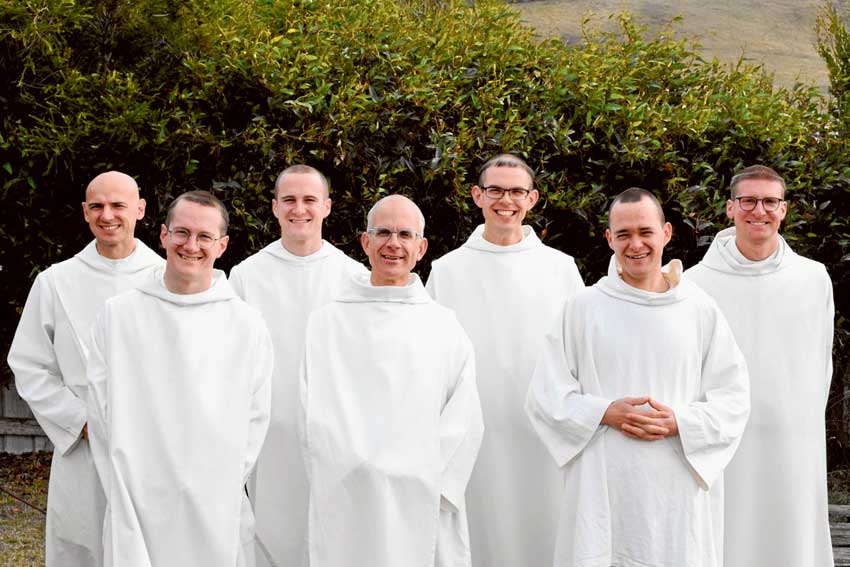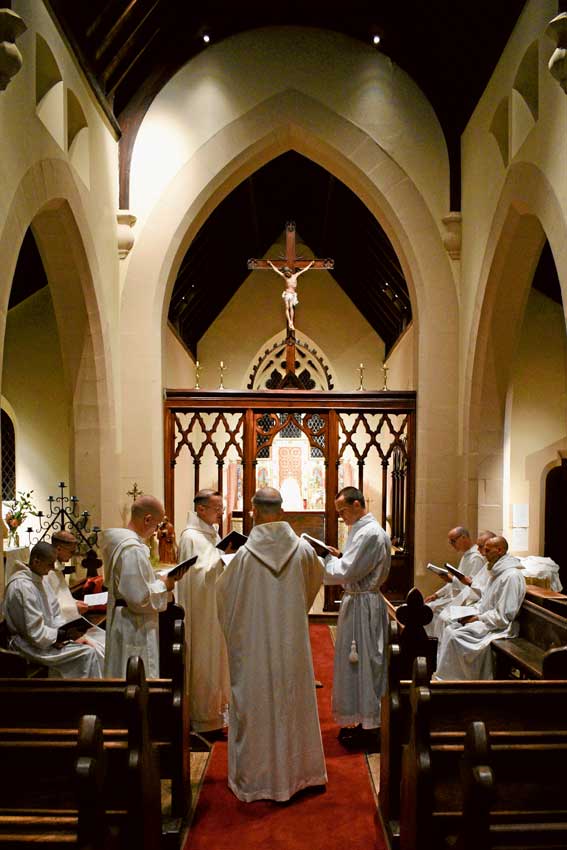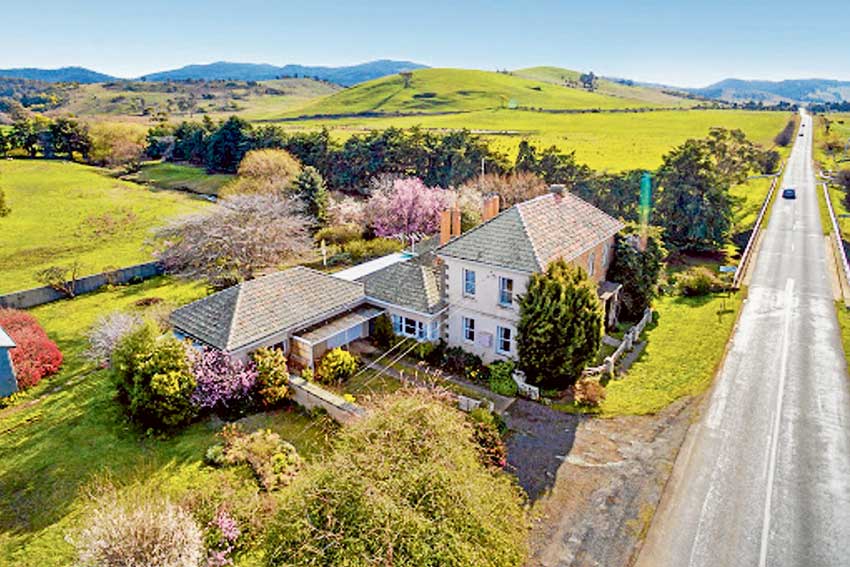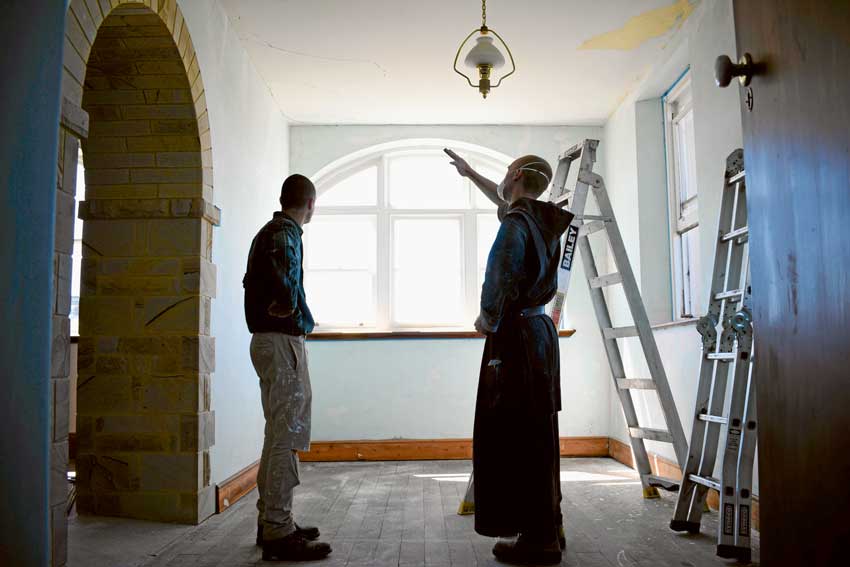
First monastic presence in the state is attracting interest
By David Daintree
On 22 February, St Patrick’s Church at Colebrook was the site of an event that must surely change the face of the Tasmanian Church.
The Benedictine Priory of Notre Dame was formally established at a solemn Foundation Mass presided over by Archbishop Julian Porteous and celebrated by the new Prior, Fr Pius Mary Noonan OSB, a monk originally from the Abbey of St Joseph at Flavigny-sur-Ozerain in eastern France. What’s significant about this? The Priory, located about 35 kilometres north of Hobart in southern Tasmania, is Tasmania’s first Catholic monastery.
Fr Pius, an American by birth, has been a monk at Flavigny-sur-Ozerain for 32 years and is an experienced retreat leader. Offering retreats will be the special charism of the new Tasmanian Priory. His brief is to establish the Priory from local resources. The signs are positive: there are now seven men in the community.

Excitement as first vows taken
On 8 December 2018 three young Australian men took their first vows at the ceremony of profession; several others are seeking admission as space becomes available. Already the little company exudes an air of excited confidence in the future of their fraternal and holy enterprise.
Why Colebrook? Firstly we have Archbishop Porteous to thank for his vision of a Tasmanian Church bolstered by the witness of traditional religious life.
We Tasmanian Catholics are fortunate he was able to match that vision with a French community generous enough to want to share with others the charism it has received. Finally, there are a lot of us here in Tasmania who long to see the little-used yet highly significant St Patrick’s Church put to more frequent use.
There is no certainty that the monks will service St Patrick’s in the long term, for they recently purchased a large property, Jerusalem Estate, to be their enduring home and the site of the permanent monastery they intend to build.

However the church is located two or three kilometres north of the Estate and may well become permanently associated with it in the future. For the time being, the monks live in the hamlet of Rhyndaston, about seven-or-so kilometres north of Colebrook.
In the meantime they celebrate Mass every day at St Patrick’s. And, of course, there are plenty of Tasmanian Catholics with an interest in obtaining the blessing of a Benedictine presence for both the Church and village of Colebrook. Among the monks’ special works are the offering of retreats, which take place both in Tasmania and on the mainland, including NSW.
Unique spirituality will feature in retreats
The community is inspired by the Spiritual Exercises of St Ignatius, founder of the Jesuits; the retreats they offer are based on this classic 16th Century work of Christian discernment of purpose and direction in life. While establishing themselves here in Australia in the last two years Fr Pius and fellow monks have offered numerous retreats for both men and women in NSW and further afield around the nation.
In doing so they are attracting a wider audience to the Benedictine spirituality and the existence of their foundation. The reputation of the Priory is spreading.
In 2017 it was featured in a special report in The Australian newspaper’s weekend magazine by Foreign Editor Greg Sheridan as well as his best-selling book God is Good for You. So far, everything augurs well for the future.
Priory’s perfect setting
The current centre of the Priory’s daily liturgy and prayer life is, as mentioned, the Church of St Patrick. What is not widely known is that it was designed by the renowned 19th Century English architect Augustus Pugin, the designer, artist, and critic known for his pioneering role in the Gothic Revival style of architecture.
Among his signature works are the interior of Westminster Palace in London, England and the iconic clock tower, later renamed the Elizabeth Tower, which houses Big Ben.

The model from which the church was built in the mid 1850s was sent as a gift from Pugin to his good friend Bishop William Willson. Internationally renowned Pugin specialist and Hobart-based Brian Andrews, believes the Colebrook Church of St Patrick is one of the most important buildings in Tasmania.
Externally it is a comparatively modest building, though also a handsome one. Its effect on entering, however, always puts me in mind of Dr Who’s Tardis: how can it seem so roomy? Its interior is surprisingly more spacious and generous than one could have imagined possible. Not just spacious, but grand and splendid and full of light.
The Sarum-inspired sanctuary is separated from the nave by a beautifully restored rood screen, beyond which the high altar, framed by its church curtains, glows with the gorgeous reds and golds and lapis blues of a medieval manuscript, colours so dear to Pugin and so characteristic of his work in textiles, ceramics and wood.
For a modern Benedictine foundation on the far side of the world and 170-or-so years after Pugin’s England it’s a near-perfect setting.
